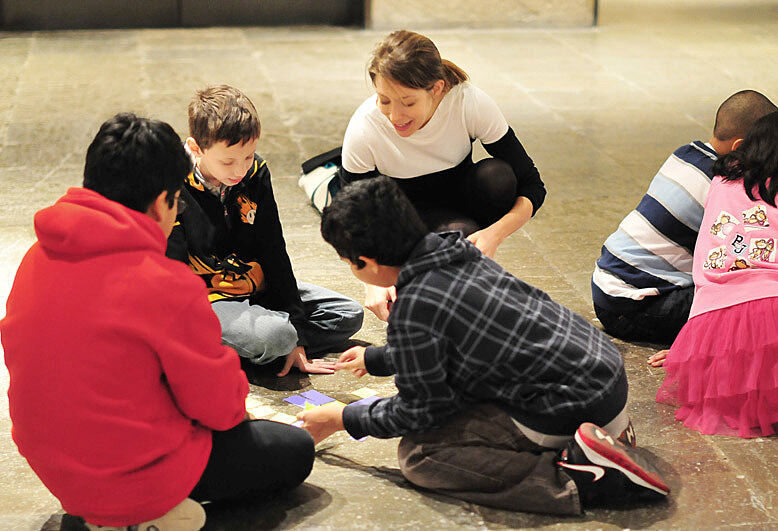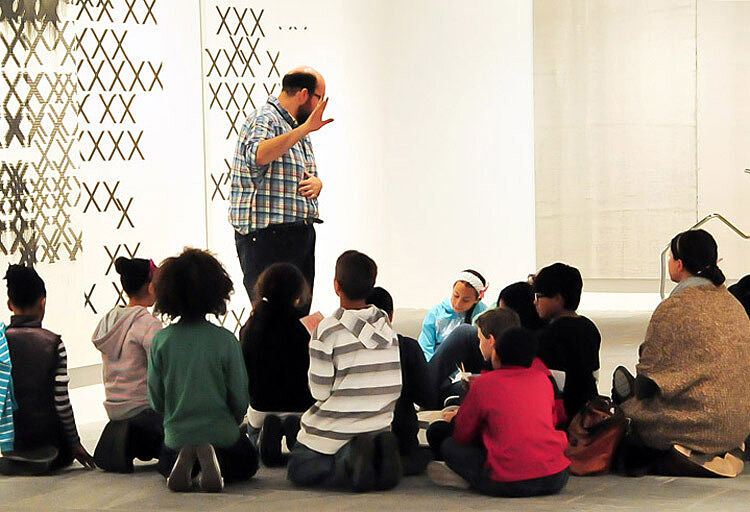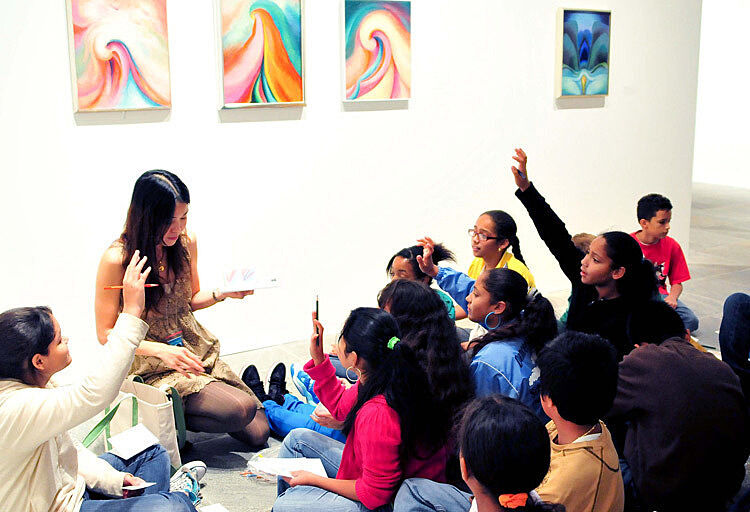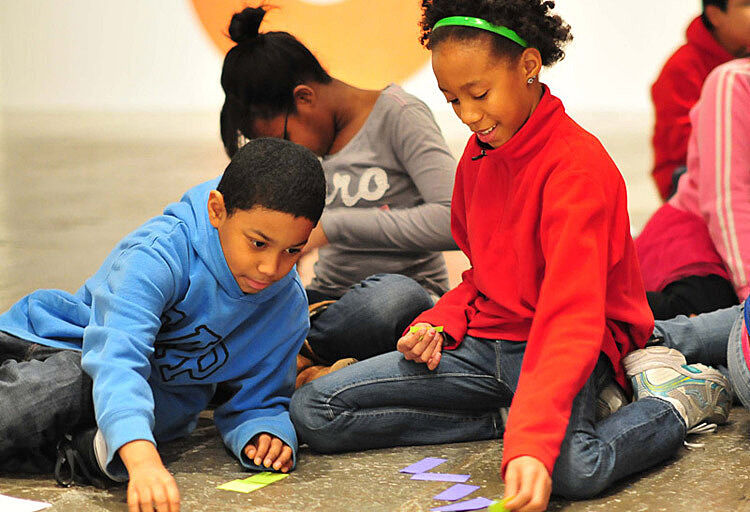Teaching Tips
How do you lead an open-ended discussion with your students focused on a work of art? What questions can you ask to encourage them to look closely and think critically? Will sharing information about the art and artist stifle students’ imaginative responses? Whitney educators have some tips and suggestions to offer as you plan your inquiry-based lesson.
Discussing images
Students on a guided tour at the Whitney are encouraged to slow down, take time to look closely at a work of art, and share their observations. Here are some tips and examples of questions that Whitney educators often pose to encourage close looking and discussion. You can use them in the classroom too.
Tips
- Always allow time for students to look carefully at the work before you begin each discussion as it is important for students to be given time to visually explore the work on their own before discussing it as a group.
- Ask students to share their initial observations and encourage them to be specific with their descriptions.
- When students share their observations or interpretations, ask them to support their ideas with visual evidence found in the work of art. Simple follow-up questions such as “how do you know that?" “what clues do you see in the artwork that give you that idea?” or “what do you see that makes you say that?” can help students deepen their initial observations.
Ask if anyone would like to add to their friend’s observations or if they have a different idea to share.
Try this!
Ask students to list words or ideas that come to mind when they look at this work of art. Why does the work of art make them think about those words or ideas? Again, ask them to be specific and use the visual evidence found in the work to support their opinions.
After the discussion, you may ask students if their initial impression about the work has changed or shifted. What helped to inform, expand, and change their first impression?
Communicating information
Whitney educators often integrate information about the art and artist during an inquiry-based discussion. We integrate information that is relevant and meaningful to the discussion while still encouraging students to share their personal and imaginative responses to an artwork. Here are some ideas to consider.
Tips
- Information can include an artist’s quote, a critic’s remark, or simply sharing the title of the artwork with students.
- The Internet offers a wealth of information about the art and artists.
- Consider introducing alternative sources of information such as videos on Art21, Artbabble, YouTube, educator blogs, and audio guides on museum websites.
Try this!
Ask students to list words or ideas that come to mind when they look at this work of art. Why does the work of art make them think about those words or ideas? Again, ask them to be specific and use the visual evidence found in the work to support their opinions.
After the discussion, you may ask students if their initial impression about the work has changed or shifted. What helped to inform, expand, and change their first impression?
Questioning strategies
Whitney educators ask different types of open-ended questions to elicit varied responses to a work of art. Some questions ask students to look closely and focus their attention on the visual elements in the work. Other questions encourage students to share personal interpretations and individual experience. Below are different types of questions that you may consider asking your students while looking at a work of art at the museum or in the classroom.
Tips
Questions that support close looking:
- What do you see? Be specific with your description.
- What interests you about this work? Record details that interest you.
- What is going on in this scene? What suggests that?
- What do you notice about the materials used?
- How does the work change as you look at it from different angles or distances?
Questions that build upon prior knowledge and connect to experience:
- What do you see on a walk through your neighborhood?
- What kinds of propaganda do you see in your everyday life?
Questions that encourage critical thinking and engagement:
- Compare this work to the previous work. In what ways are they similar? How are the two works different?
- Share a quote about the art and/or artist. Ask students if they agree or disagree with the statement. Why?
- Reveal the title of the work. How does knowing the title change students’ initial observations or reconsider the artist’s intentions?
- Ask students to imagine that they are in the artwork. What kind of space is this? What would it feel like to enter that space?
Working with themes
School Programs at the Whitney uses a theme-based approach to teach in the galleries. This approach allows us to connect different types of artwork focused on a specific theme and discuss topics and issues that are relevant to the world we live in. Our artist-centered themes encourage students to think like artists and challenge them to consider the multi-faceted role that artists play in American culture and society.
Tips
Whitney educators put a lot of thought into planning a one-hour guided visit that connects with classroom learning. Museum educators consider the following ideas as they choose and sequence works of art:
- Identify and develop an age-appropriate theme that is relevant to what you are teaching in the classroom and interesting to your students.
- The theme should be broad enough to invite multiple perspectives and encourage diverse viewpoints about a work of art but also narrow enough so that the discussion stays focused. It’s a fine balance!
- The theme should be visually evident in the work. If the theme is not visually apparent, you may end up having an unfocused discussion that is irrelevant to your curriculum. Consider what questions you might ask that will lead students to discover the theme. What information might you introduce to focus and deepen the discussion?
- Choose works of art that challenge students to explore the theme in different ways. Consider how each artwork selected introduces a new idea or presents a different aspect of the theme. How does each work deepen or expand students’ understanding about the theme/topic? Avoid having the same conversation at each work of art.
- Select and sequence the works so that they become more visually and conceptually complex as the discussion progresses.
- While still focused on the theme, remember to keep the questions open-ended and encourage students to develop their own ideas and interpretations.
- Consider how a theme can support and encourage interdisciplinary connections.
Learn more about our four artist-centered themes.




